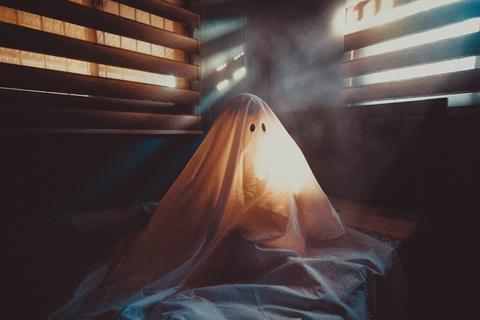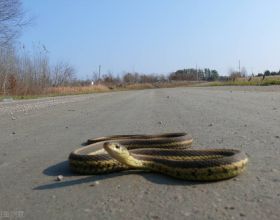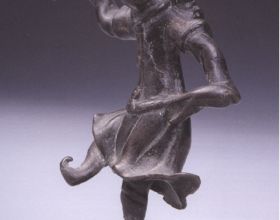來源:中國日報網
世界上有不少人相信鬼的存在。其實,大多數“見鬼”經歷都是可以用科學來解釋的。你所害怕的“鬼”,往往只是一種錯覺。
1. ELECTROMAGNETIC FIELDS
電磁場
For decades, a Canadian neuroscientist named Michael Persinger studied the effects of electromagnetic fields on people’s perceptions of ghosts, hypothesizing that pulsed magnetic fields, imperceptible on a conscious level, can make people feel as if there is a “presence” in the room with them by causing unusual activity patterns in the brain’s temporal lobes. Persinger studied people in his lab wearing a so-called “God Helmet,” finding that certain patterns of weak magnetic fields over someone’s head for 15 to 30 minutes can create the perception that there’s an invisible presence in the room.
加拿大神經學家邁克爾·波辛格花了幾十年研究電磁場對於“見鬼”的影響後做出了一個假設,那就是人在意識層面察覺不到的脈衝磁場可以透過引發大腦顳葉的異常活動,讓人們感覺屋裡有“鬼”。波辛格在實驗室裡讓人們戴上所謂的“上帝頭盔”,並透過研究發現,人的大腦受到特定模式的弱磁場影響15到30分鐘後,就會產生屋裡有鬼的感覺。
2. INFRASOUND
次聲波
Infrasound is sound at levels so low humans can’t hear it (though other animals, like elephants, can). Low frequency vibrations can cause distinct physiological discomfort. Scientists studying the effects of wind turbines and traffic noise near residences have found that low-frequency noise can cause disorientation, feelings of panic, changes in heart rate and blood pressure, and other effects that could easily be associated with being visited by a ghost.
次聲波指的是人類無法聽到的頻率過低的聲音(不過其他一些動物能聽到,比如大象)。低頻率的聲波會引發生理上的明顯不適。科學家研究了居民住宅附近的風力渦輪機和交通噪音的影響,結果發現,低頻率噪音會引發定向障礙、恐慌感、心率和血壓波動以及其他容易和見鬼聯絡在一起的症狀。
For instance, in a 1998 paper on natural causes of hauntings, engineer Vic Tandy described working for a medical equipment manufacturer, whose labs included a reportedly haunted room. Whenever Tandy worked in this particular lab, he felt depressed and uncomfortable, often hearing and seeing odd things—including an apparition that definitely looked like a ghost. Eventually, he discovered that the room was home to a 19 Hz standing wave coming from a fan, which was sending out the inaudible vibrations that caused the disorienting effects. Further studies also show links between infrasound and bizarre sensations like getting chills down the spine or feeling uneasy.
舉個例子,在1998年的一篇關於“見鬼”自然成因的論文中,工程師維克·坦迪描述了自己在一家醫療裝置生產商工作的經歷,據說這個生產商的實驗室“鬧鬼”。每次坦迪在這個“鬧鬼”的實驗室裡工作時,都會感到壓抑和不適,還經常聽到、看到奇怪的東西,包括一個看起來非常像鬼的幻影。最後,他發現這個房間裡有一個產生19赫茲駐波的風扇,這種聽不見的聲波振動會引發定向障礙。進一步的研究還表明,次聲波與後背發涼或惴惴不安的怪異感覺也有關係。
3. MOLD
黴菌
Shane Rogers, an engineering professor at Clarkson University, spent months touring reportedly haunted locations looking for not-so-paranormal activity: mold growth. Preliminary research indicated that some molds can cause symptoms that sound pretty ghostly—like irrational fear and dementia. “I’ve watched a lot of ghost shows,” he told Mental Floss in 2015.
克拉克森大學的工程學教授謝恩·羅傑斯花了數個月到各個“鬧鬼”之地尋找一種並非超自然的現象:黴菌生長。先前的研究顯示,一些黴菌會引發類似靈異的症狀,比如無理性的恐懼和痴呆。他在2015年告訴Mental Floss網站說:“我看到了不少鬧鬼現象。”
4. CARBON MONOXIDE POISONING
一氧化碳中毒
In 1921, a doctor named W.H. Wilmer published an odd story about a haunted house in the American Journal of Ophthalmology. The family who lived in this haunted residence, called the H family in the medical literature, began experiencing weird phenomena when they moved into an old house—hearing furniture moving around and strange voices in the night, feeling the presence of invisible specters. They reported being held down in bed by ghosts, feeling weak, and more. As it turned out, a faulty furnace was filling their house with carbon monoxide, causing aural and visual hallucinations. The furnace was fixed, and the H family went back to their lives, sans ghosts.
1921年,一位名叫W·H·威爾默的醫生在《美國眼科學雜誌》上發表了一篇關於“鬼屋”的奇談。住在鬼屋裡的一家人在這本醫學雜誌中被稱為H家,他們搬進這座老房子後就開始怪事連連。他們在夜裡聽到傢俱移動和奇怪的聲音,感覺隱形的鬼魂在身邊遊蕩。他們還報告稱自己被“鬼壓床”,感覺虛弱無力,諸如此類。結果發現,因為火爐出了故障,家裡充滿了一氧化碳氣體,從而引發了聽覺和視覺上的幻覺。後來爐子修好了,H家又回到了沒有鬼的正常生活。
英文來源:Mental Floss
翻譯&編輯:丹妮

















